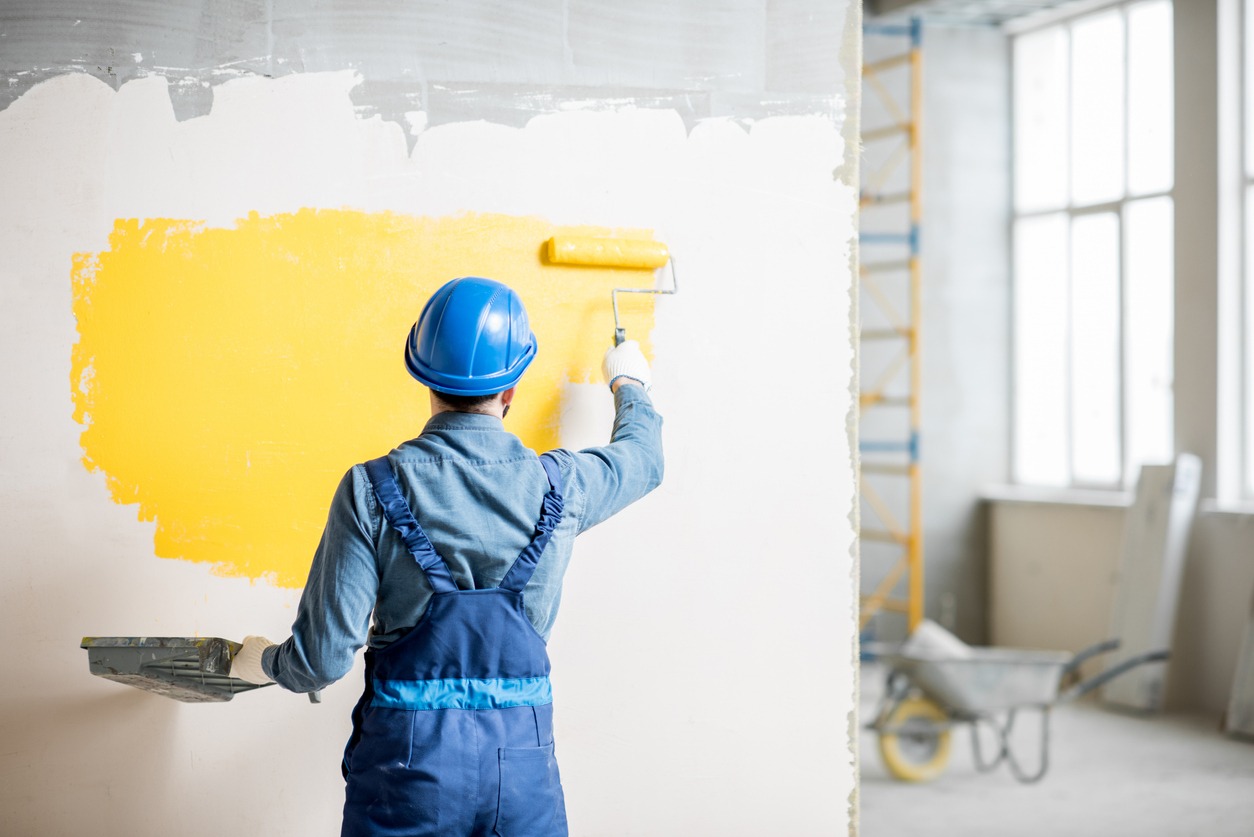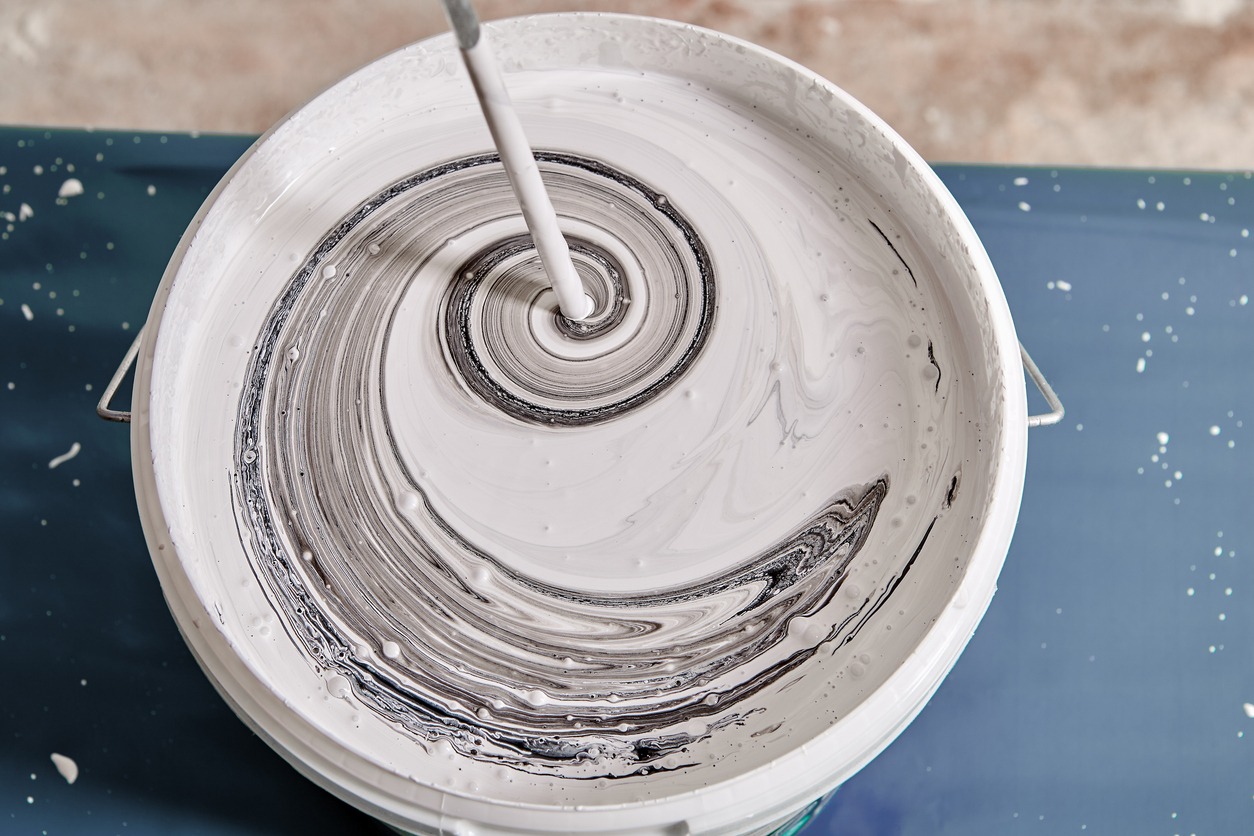In commercial painting projects, achieving the perfect finish involves more than just choosing the right color. Paint additives can be a game-changer. These products offer different benefits that enhance the performance and appearance of the paint.
But what exactly are paint additives, and why should you consider using them in your next project? Let us guide you through the different types of paint additives available, their benefits, and how they can elevate your commercial painting projects.
Different Types of Paint Additives
Knowing about the various paint additives that can enhance your work is important when embarking on commercial painting projects. Let’s break down some common types and how they can benefit your projects.
1. Thickeners
Thickeners do exactly what their name suggests—they thicken the paint. This helps control the paint’s viscosity, making it easier to apply and ensuring it stays in place without dripping or running. Thickeners can also improve the overall texture and consistency of the paint, leading to a more uniform finish.
Common Uses:
In commercial projects, thickeners are particularly useful for vertical surfaces where you want to avoid drips and runs. They are also great for creating textured finishes that add visual interest and depth to walls and ceilings.
2. Flow and Leveling Agents
Flow and leveling agents help paint spread out evenly and settle smoothly on surfaces. These additives reduce the appearance of brush strokes and roller marks, resulting in a flawless, professional-looking finish. They also help the paint flow better, making it easier to work with, especially on large surfaces.
Common Uses:
These agents are ideal for large commercial spaces where a smooth, uniform finish is crucial. They’re often used in offices, retail spaces, and other environments where aesthetics and first impressions matter.
3. Anti-foaming Agents
Anti-foaming agents prevent the formation of bubbles during the mixing and application of paint. Bubbles can create an uneven surface and affect the overall look and durability of the paint job. By reducing foam, these additives help ensure a smoother application and finish.
Common Uses:
Anti-foaming agents are essential when using spray equipment, as they help maintain a consistent application. They’re also helpful in high-traffic areas where a smooth, durable finish is necessary.
4. UV Stabilizers
UV stabilizers protect paint from the harmful effects of ultraviolet light. They prevent fading, chalking, and deterioration caused by sun exposure, keeping the colors vibrant and the paint looking fresh for a longer period.
Common Uses:
These additives are particularly beneficial for outdoor projects or indoor areas with significant natural light exposure, such as storefronts and atriums. They help maintain the aesthetic appeal and longevity of the paint job.
5. Biocides and Mildewcides
Biocides and mildewcides are additives that inhibit the growth of mold, mildew, and bacteria on painted surfaces. They protect both the paint and the underlying surfaces, ensuring a healthier environment and extending the paint job’s life.
Common Uses:
These additives are necessary for moisture-prone areas, such as bathrooms, kitchens, and basements. They’re also important in healthcare facilities, restaurants, and other commercial spaces where hygiene is a top priority.
6. Rust Inhibitors
Rust inhibitors are additives that prevent the formation of rust on metal surfaces. They create a protective barrier that stops moisture and oxygen from reaching the metal, thus preventing oxidation and corrosion.
Common Uses:
These are essential for painting metal structures, such as steel beams, railings, and metal doors, especially in industrial and outdoor environments where metal is prone to rusting.
7. Drying Agents
Drying agents accelerate the drying process of paint. This can be particularly useful in fast-paced commercial projects where time is of the essence. They ensure that the paint cures quickly and uniformly, reducing downtime between coats and overall project completion time.
Common Uses:
Drying agents are great for projects with tight deadlines, such as retail renovations, office spaces, and any commercial area that needs to be operational as soon as possible.
8. Stabilizers
Stabilizers help maintain the consistency and performance of paint over time. They prevent the paint from separating, thickening, or degrading during storage and application. This ensures that the paint remains easy to apply and produces a consistent finish.
Common Uses:
Stabilizers are beneficial in any commercial painting project, particularly those involving long storage periods or variable environmental conditions.
9. Defoamers
Defoamers reduce and eliminate foam during the mixing and application of paint. Foam can cause defects in the paint film, such as pinholes and craters, which can compromise the finish and durability of the paint job.
Common Uses:
Defoamers are useful in projects that involve spray applications or where smooth, blemish-free finishes are crucial, such as in automotive showrooms, retail spaces, and other high-visibility areas.
10. Adhesion Promoters
Adhesion promoters enhance the bond between the paint and the surface it’s applied to. They improve the paint’s adhesion to complex surfaces, ensuring that it doesn’t peel or flake over time.
Common Uses:
These additives are especially valuable for surfaces that are typically challenging to paint, such as glass, plastic, or previously painted surfaces. They are also beneficial in high-traffic areas where durability is paramount.
Factors to Consider When Choosing Paint Additives
Now that you know what additives are available don’t be hasty about picking one and mixing it with your paint. A few key considerations will help ensure the best results and avoid costly mistakes.
Compatibility with Paint
Not all paint additives are compatible with every type of paint. For example, certain thickeners work best with latex paints, while others are more suitable for oil-based paints. It’s crucial to choose additives that are specifically formulated for the type of paint you’re using. Always check the product labels and manufacturer recommendations to ensure compatibility.
Using incompatible additives can lead to issues such as poor paint performance, uneven finishes, or even chemical reactions that could damage the painted surfaces. To avoid these problems, test the additive with a small amount of paint first or consult with a professional to ensure you’re making the right choice.
Project Requirements
Every commercial painting project has unique requirements. For instance, an outdoor project may benefit from UV stabilizers to protect against sun damage, while an indoor project in a humid area might need biocides to prevent mold growth. Assess your project’s specific needs and select additives that address those particular challenges.
Once you’ve identified the specific needs, tailor your choice of additives to meet those requirements. This might mean using a combination of additives to achieve the desired results. For example, in a high-traffic area, you might use both thickeners for durability and flow agents for a smooth finish.
Environmental Regulations
Environmental regulations regarding VOC emissions and chemical use can vary by location. Ensure that the paint additives you choose comply with local laws and standards. This will not only help protect the environment but also ensure that your project meets all legal requirements.
With growing awareness of environmental impact, many manufacturers offer eco-friendly paint additives. These products are designed to be less environmentally harmful while still providing effective performance. Opting for eco-friendly options can enhance your company’s reputation and appeal to clients who prioritize sustainability.
Conclusion
Paint additives play a crucial role in enhancing the performance, appearance, and longevity of commercial painting projects. The proper additives can make a big difference.
If you’re planning a commercial painting project and want to ensure the best results, consider contacting Custom Painting, Inc. Our team of experts can help you choose suitable paint additives and provide professional application services to meet your needs. Contact us today via our website or call us at 925-294-8062 to learn more about how we can assist with your next project!



